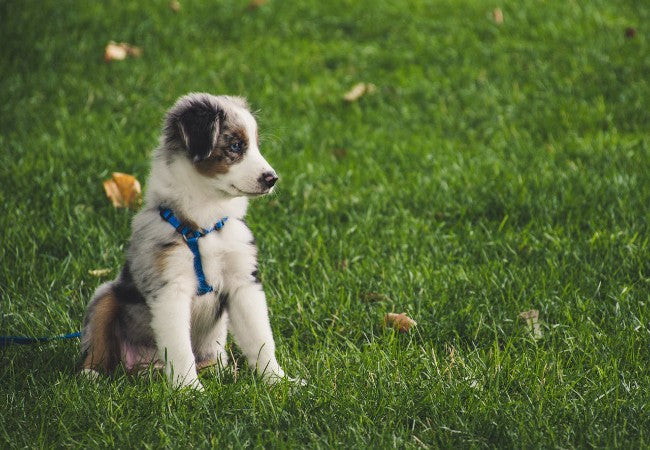Growth in Dogs 2025: Vet Reviewed Guide to Puppy Development, Growth Plates & Wellness 🐾

In this article
Growth in Dogs 2025: Vet Reviewed Guide to Puppy Development, Growth Plates & Wellness 🐾
By Dr. Duncan Houston BVSc
Welcoming a puppy means daily delights—but also questions: “How big will they get?”, “When should we adjust food or exercise?” This comprehensive guide dives deep into canine development, covering physical growth across breeds, nutrition, orthopedic health, and key milestones. It also includes wellness strategies and brand tools like Ask A Vet,
1. 📆 Growth Plate Closure & Final Height
Growth plates—the cartilaginous “soft ends” of bones—typically fuse between 9–11 months, though small dogs may close earlier (6–8 mo) and giant breeds may continue growing until 16–24 mo.
By the time growth plates close, your dog's final height and bone structure are set, even if muscle and coat continue developing.
2. 🌱 When Puppies Grow the Fastest
Rapid growth occurs:
- Small breeds: 3–5 months peak.
- Medium/large: steady until 9–12 mo.
- Giant breeds: growth extends to 18–24 mo.
Always monitor growth rate—not just overall size—and pair it with body condition scores to prevent overweight or excessive growth.
3. 📊 Breed & Size Benchmarks
Growth charts vary by breed and category:
- Small breeds often reach adult weight by 6–9 months.
- Medium breeds continue growing till about a year.
- Large/Giant breeds remain in flux until 18–24 months.
Charts provide averages—but individual pups vary. Use of the puppy weight calculator gives context.
4. 🐶 Monitoring Growth Effectively
- Weigh monthly and weekly during rapid growth.
- Consult growth charts for breed size category.
- Watch for sudden weight gain/loss—could signal feeding issues or illness.
- Assess body condition regularly—avoid excess fat or underweight shapes.
Blended with personal habit observations, these steps help ensure healthy development.
5. 🍗 Nutrition & Feeding Strategies
Feed a life-stage-appropriate puppy diet: high in protein, calories, and calcium tailored for size. Large/giant breed formulas prevent too-rapid bone growth.
Transition to adult food once physically mature: ~6–10 mo for small breeds, ~12 mo for medium, ~18–24 mo for large breeds.
Include nutritional supplements like glucosamine,
6. 🦴 Orthopedic Health & Exercise
- Restrict high-impact exercise until growth plates close—no long runs or jumping.
- Use gentle leash walks and soft play for mental/physical development.
- Watch for limping, joint swelling, or gait changes—could signal panosteitis, HOD, or hip dysplasia.
- Promptly use a veterinary assessment if symptoms appear for early intervention.
7. 🩺 Spaying, Neutering & Timing Considerations
Hormonal changes from spay/neuter can affect growth:
- Early spays (<6 mo) are acceptable for small breeds but may slightly prolong bone growth in large breeds.
- Timing remains debated—consult your vet to optimize orthopedic and behavioral outcomes.
8. 💡 Behavioral Development Milestones
- 8–16 weeks: socialisation critical—exposure to people, pets, environments.
- 6–9 months: adolescence—expect testing of boundaries or fear phases.
- 12–24 months: emotional maturity—but some retain puppy traits.
9. 🩻 When to Visit the Vet
Schedule regular checks—weight, growth tracking, vaccinations, body scoring. Flag any:
- Persistent lameness or joint swelling, especially in large breeds.
- Abdominal bloating or distension.
- Changes in appetite, stool, or grooming.
Puppies often require 3–4 vet visits during the first year—and app-based support with Ask A Vet enhances access between appointments.
10. 📌 Key Takeaways & Growth Checklist
- Growth plates fuse by 6–24 months, depending on size.
- Peak growth: 3–5 mo (small), 9–12 mo (medium), up to 24 mo (giant).
- Feed size-specific puppy diets; transition after physical maturity.
- Avoid high-impact exercise until growth completes.
- Monitor joint health; consult vet at first signs of orthopedic issues.
- Vet partnership—via checkups or Ask A Vet app—is vital throughout growth.






